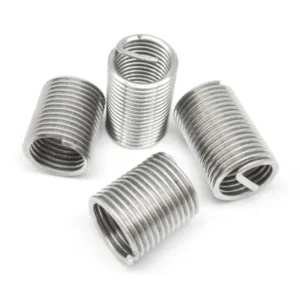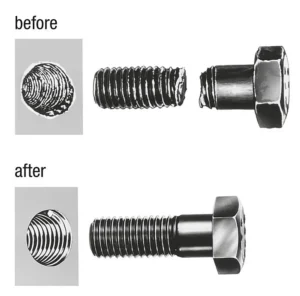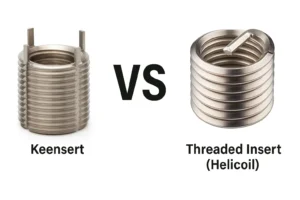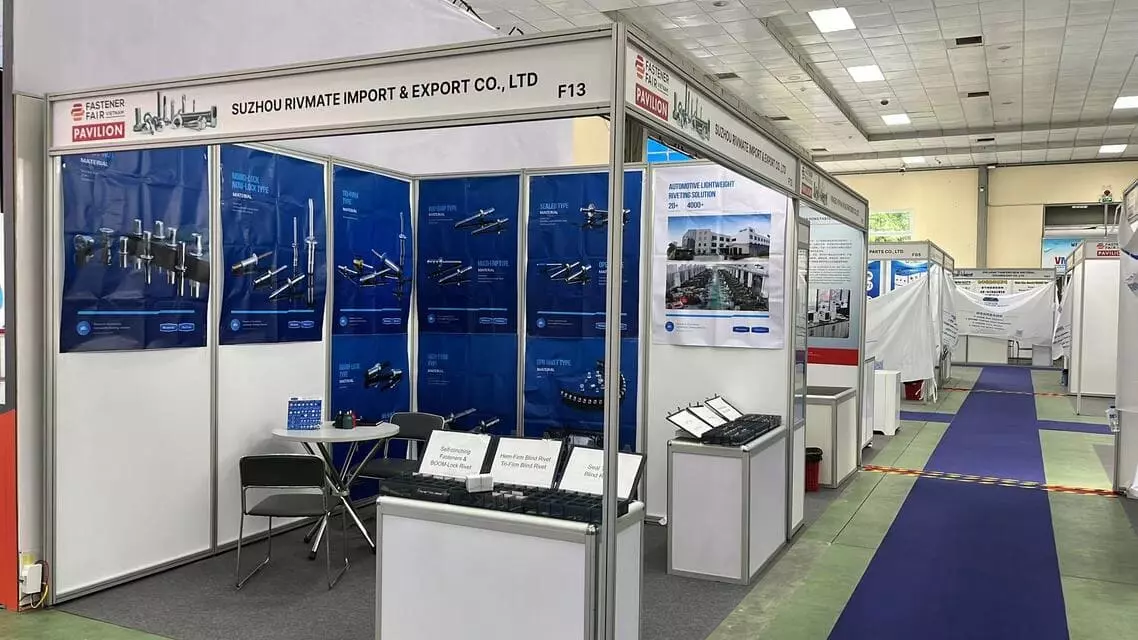Top Applications for Nutserts: Where and How to Use Them
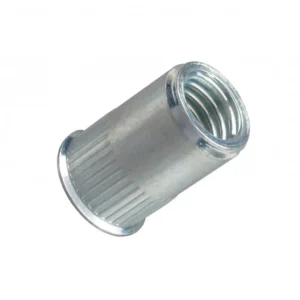
Leading Rivet Nut Manufacturer and Supplier in China
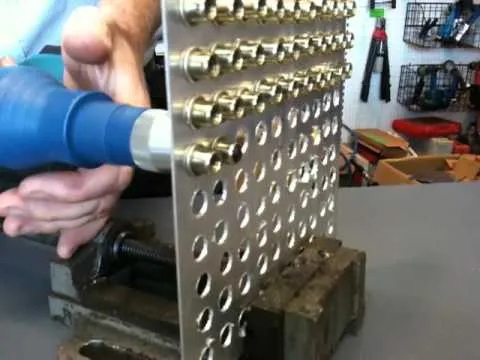
Nutserts are versatile fasteners used in a wide range of industries. From automotive manufacturing to aerospace and electronics, the applications for Nutserts are vast and varied. In this blog, we’ll explore the top applications for Nutserts, highlighting how and where they’re used to enhance strength, durability, and reliability in different environments.
Table of Contents
What Is a Nutsert?

1. Definition of a Nutsert
A Nutsert (rivet nut) is a threaded fastener designed for thin-walled materials or hollow structures, enabling strong threaded connections in metal, plastic, composite materials, and more. It works similarly to a rivet but differs in that it has an internal threaded hole, allowing bolts to be installed afterward.
2. Key Features of Nutserts
(1) Suitable for Thin-Walled or Hollow Structures
- Nutserts allow the creation of threads in thin-walled materials (such as sheet metal, stainless steel panels, aluminum profiles) without the need to drill deep holes or add extra thickness.
- For hollow tubes (such as metal frames and tubular structures), Nutserts provide a reliable fastening solution.
(2) Single-Sided Installation for Blind Holes
- Nutserts use a blind hole installation method, meaning they can be installed from one side only, without requiring access to the backside. This makes them ideal for closed structures or hard-to-reach areas (such as inside automobile frames, enclosures, and cabinets).
- This feature makes Nutserts a great alternative to welded nuts or conventional threaded holes, avoiding the complexities of traditional methods.
(3) Provides High-Strength Threads for Various Materials
- Nutserts can be installed in metal (steel, stainless steel, aluminum), plastic, fiberglass, carbon fiber, and other materials, providing secure and stable threaded connections.
- Compared to self-tapping screws, Nutserts offer greater pull-out resistance and anti-rotation performance, making them suitable for applications requiring higher load-bearing capacity.
(4) No Welding Required, Easy to Install
- No welding or tapping is required, allowing for direct installation, simplifying the assembly process, and improving production efficiency.
- Installation can be done using manual, pneumatic, or electric rivet nut tools, making the process easy and efficient for both mass industrial production and DIY repairs.
Why the Need for Nutserts?
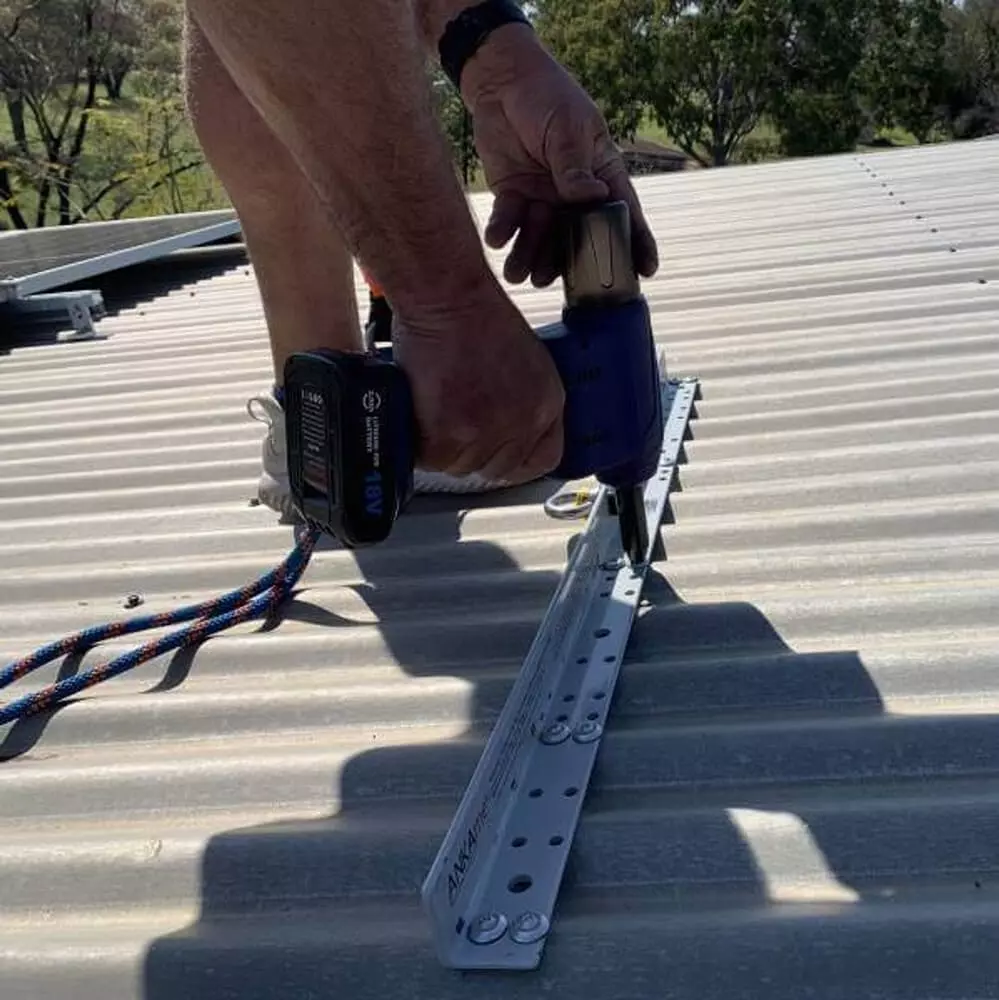
In many industrial manufacturing and repair applications, traditional threaded fastening methods (such as welded nuts, tapping, or self-tapping screws) are not always the ideal choice. Nutserts (rivet nuts) provide a more efficient and reliable solution, especially for thin-walled materials, hollow structures, and blind-hole installations. Here are the key reasons why Nutserts are widely preferred:
1. Suitable for Thin-Walled Materials, Solving Thread Strength Issues
For thin sheet metal, plastic, composite materials, and other substrates that lack sufficient thread depth, conventional tapped threads can easily strip or provide insufficient load-bearing capacity. Nutserts can:
- Create secure threads in thin-walled materials ranging from 0.5mm to 6mm, preventing common issues like stripped threads.
- Distribute load over a wider surface area, increasing pull-out resistance and torque strength, ensuring a strong and stable connection.
2. Blind Installation Without Backside Access
In some structures, the backside is inaccessible or traditional fasteners cannot be installed (such as hollow tubes or enclosed components). Welded nuts or conventional bolts may be difficult to apply, whereas Nutserts:
- Allow installation from only one side, eliminating the need for backside access—ideal for blind-hole applications.
- Replace welded nuts, improving installation efficiency, while avoiding the heat distortion and deformation associated with welding.
3. Superior Fastening Strength Over Self-Tapping Screws
While self-tapping screws can be used in thin-walled materials, they often suffer from loosening, pull-out failure, and thread stripping over time. Nutserts offer:
- Higher pull-out and shear strength, making them suitable for high-load applications.
- Reusability, unlike self-tapping screws, which can damage the base material upon removal.
4. Versatile Across Multiple Materials
Nutserts can be used in metal, plastic, fiberglass, composites, and other materials, making them far more versatile than traditional tapped threads or welded nuts.
- Steel Nutserts: Ideal for high-strength applications, such as heavy machinery and automotive chassis.
- Aluminum Nutserts: Suitable for lightweight applications in aerospace and railway industries.
- Stainless Steel Nutserts: Excellent for corrosion-resistant environments, such as marine and chemical industries.
5. A Replacement for Welded Nuts, Avoiding Welding Defects
Welded nuts require high-temperature operations, which can cause several problems:
- Material distortion, affecting product accuracy.
- Heat-affected zone (HAZ) embrittlement, reducing the strength of the material.
- Complex welding processes, increasing labor and equipment costs.
Nutserts, on the other hand, require no heat application and can be installed using simple manual or powered tools, avoiding these issues entirely.
6. Increased Production Efficiency, Ideal for Mass Production
- Fast installation: With manual, electric, or pneumatic tools, Nutserts can be installed within seconds, boosting assembly efficiency.
- Reduced labor costs: Compared to tapping or welding, Nutserts offer easier installation with no need for skilled welders.
- Lower maintenance costs: Stable and durable threading reduces rework and repair expenses caused by damaged threads.
Summary: Why the Need for Nutserts?
| Advantages of Nutserts | Disadvantages of Traditional Methods |
| Works with thin-walled materials, creating strong threads | Tapped threads can strip easily and lack strength |
| Single-sided installation, ideal for blind holes | Standard bolts and nuts require backside access |
| High pull-out and shear resistance, preventing loosening | Self-tapping screws have lower strength and may loosen over time |
| Compatible with various materials, offering greater versatility | Traditional fastening methods have limited applications |
| No welding required, eliminating heat-related issues | Welded nuts may cause material distortion and heat damage |
| Fast installation, reducing labor and maintenance costs | Tapping and welding are labor-intensive and costly |

Nutserts (rivet nuts) are widely used across various industries due to their suitability for thin-walled materials, easy installation, and strong threaded connections. Below are the specific applications and advantages of Nutserts in the automotive, aerospace, furniture manufacturing, electronics, rail transportation, and marine industries.
1. Automotive Industry
Applications of Nutserts in the Automotive Industry
Nutserts are commonly used in automotive manufacturing and repair, primarily for:
- Reinforcing body structures: Such as doors, chassis, engine mounts, and frame connections, providing strong threaded connections to enhance structural stability.
- Installing interior components: Such as dashboards, seats, door panels, and carpet fasteners, ensuring they stay securely attached over time.
- Attaching external accessories: Such as roof racks, mudguards, bumpers, and pedals, adaptable to various body materials.
Why Choose Nutserts in the Automotive Industry?
- Suitable for lightweight automotive designs: Nutserts can create thread connections in materials like aluminum alloys and galvanized steel, reducing vehicle weight.
- No welding required, improving production efficiency: Compared to traditional welded nuts, Nutserts eliminate the need for high-temperature welding processes, reducing heat impact and preventing deformation.
- Easy installation and maintenance: Nutserts are ideal for blind-hole applications, particularly for threaded connections in enclosed parts of vehicles, such as internal door supports.
2. Aerospace Industry
Applications of Nutserts in Aerospace
In the aerospace industry, Nutserts are primarily used for:
- Securing airframe structures: Used to connect aluminum alloys, titanium alloys, or carbon fiber composite materials in aerospace components like wings and cockpit frames.
- Aircraft and spacecraft repairs and modifications: Used for installing and securing brackets for electronic equipment, instrument components, and ventilation ducts.
- Connecting lightweight alloy structures: Nutserts provide high-strength threads on light materials like carbon fiber and honeycomb panels.
Why Choose Nutserts in Aerospace?
- Suitable for lightweight materials: Aerospace industries frequently use aluminum alloys and composites, and Nutserts are compatible with these materials without damaging the base material.
- High-strength threaded connections, shock and vibration-resistant: Aircraft and spacecraft experience strong vibrations during high-speed flight, and Nutserts provide reliable threaded connections that prevent loosening.
- Easy maintenance, no welding needed: Unlike welded nuts, Nutserts can be installed on-site without high-temperature operations, offering quick and easy installation for maintenance.
3. Furniture Manufacturing
Applications of Nutserts in Furniture Manufacturing
Nutserts have the following primary applications in furniture manufacturing:
- Metal frame furniture: Used for threaded connections in steel office desks, shelves, dining tables, and chairs.
- Wooden or composite material components: Used for fastening MDF (medium-density fiberboard), plywood, and plastic furniture parts.
- Modular or removable structures: Suitable for furniture that needs disassembly, such as foldable tables, DIY furniture, and modular shelves.
Why Choose Nutserts in Furniture Manufacturing?
- Provide stable threaded connections, preventing wood thread loosening: Traditional threads on wood or composite materials may strip over time, but Nutserts provide durable metal threads.
- Compatible with various materials: Whether it’s metal, plastic, MDF, or plywood, Nutserts offer stable connections.
- Removable and reusable: Ideal for furniture that requires frequent disassembly, such as office desks and foldable chairs, extending the lifespan of the furniture.
4. Electronics & Enclosures
Applications of Nutserts in Electronics
Nutserts are commonly used in the electronics industry for:
- Server cabinets, distribution boxes, and electronic control panels: For installing and securing outer casings, doors, mounting brackets, and more.
- Electronic equipment brackets and reinforced mounting holes: Ensuring that electronic components, PCB boards, and heat sinks are securely fastened.
- Securing heat sinks and fans: Providing strong threaded connections to ensure that these components remain securely attached for long-term use.
Why Choose Nutserts in Electronics?
- Suitable for sheet metal structures, providing stable threads: Server cabinets and enclosures are often made from thin metal plates, and Nutserts can form secure threads in these thin materials.
- No welding required, preventing damage to electronic components: Traditional welding methods may affect sensitive electronic parts, whereas Nutserts use cold connections with no heat impact.
- Easy maintenance and component replacement: Threaded connections are removable, allowing for easy upgrades, repairs, or component replacements.
5. Rail & Marine Industry
Applications of Nutserts in Rail and Marine Industries
Nutserts are widely used in the rail and marine industries for:
- Rail car bodies and interior installations: Used to secure seats, handrails, control panels, and other parts inside railcars.
- Marine equipment brackets and railing fixation: Nutserts are used for threaded connections on decks, cabins, and equipment mounts.
- High-strength, corrosion-resistant fasteners: Stainless steel Nutserts are used in corrosive, moist environments, such as marine work equipment.
Why Choose Nutserts in Rail & Marine Industries?
- Vibration-resistant, preventing loosening: Trains and ships experience significant vibrations from high-speed travel or wave impact, and Nutserts offer high-strength connections that prevent loosening.
- Suitable for corrosive environments: Marine environments or railways are exposed to moisture and salt, and stainless steel Nutserts offer corrosion resistance and a long service life.
- Easy maintenance, improving operational efficiency: Nutserts can be easily installed or replaced on-site, reducing maintenance costs and increasing operational efficiency.
Do You Have Any Questions?
Let Us Solve Your Problem
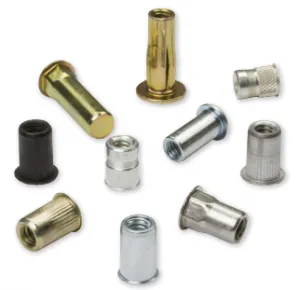
(1) Choosing by Material
Different materials of Nutserts offer varying strength, corrosion resistance, and weight characteristics, so selecting the right one based on the application is essential.
Steel Nutserts offer high strength and load-bearing capacity, making them ideal for applications that need to withstand significant tension and torque. For example, in automotive manufacturing, machinery, and construction industries, steel Nutserts provide stable threaded connections that ensure long-term durability. Additionally, steel Nutserts offer high cost-performance, making them suitable for large-scale production applications.
Stainless steel Nutserts offer excellent corrosion resistance, making them particularly suitable for humid, chemically corrosive, or high-temperature environments. For example, in marine industries, offshore platforms, outdoor equipment, and food processing machinery, stainless steel Nutserts can effectively resist seawater and acidic or alkaline environments, extending service life. Additionally, stainless steel Nutserts can withstand higher mechanical stress, making them suitable for heavy-duty connections.
Aluminum Nutserts offer the advantages of lightweight and corrosion resistance, making them ideal for industries with stringent weight requirements, such as aerospace, electronics, and precision instruments. For instance, in the aerospace industry, aluminum Nutserts can provide reliable threaded connections on carbon fiber, aluminum alloys, and other lightweight materials without adding significant weight, which helps improve fuel efficiency or battery life. Additionally, aluminum Nutserts are widely used in electronics because they do not interfere with signal transmission and are easy to install.
(2) Choosing by Head Type
The head type of Nutserts affects their installation method and final appearance, so the selection should be based on specific requirements.
Flat head Nutserts are the most common standard type, suitable for most applications. This design allows the flange to sit flush with the workpiece surface after installation, providing even load distribution and enhancing connection stability. Common applications include automotive manufacturing, enclosures, and furniture manufacturing. Due to their versatility, flat head Nutserts are generally a go-to choice for most fastening tasks.
Countersunk Nutserts have a flange that can be fully embedded into the workpiece surface, making the surface flatter after installation. This type is particularly suitable for applications where appearance is important, such as high-end furniture, electronic devices, and precision instruments. For example, in aerospace or automotive interiors, countersunk Nutserts can prevent the nut from protruding, which could affect the overall aesthetic and aerodynamic design. Additionally, countersunk Nutserts can reduce air resistance, providing additional optimization in high-speed moving devices or vehicles.
Reduced head Nutserts are suitable for applications with space constraints, such as narrow pipes, small enclosures, and compact electronic devices. Due to their smaller flange size, they can be installed in smaller holes without affecting the layout of other components. In industries like aerospace, medical devices, and small mechanical parts, reduced head Nutserts are an ideal solution to space limitations.
(3) Choosing by Nutsert Body Shape
The shape of Nutserts affects how they are fixed within the material, particularly in terms of preventing rotation and improving fastening strength.
Round body Nutserts are a universal design, suitable for most thin-walled materials, such as metal sheets, plastics, and composites. This Nutsert structure is simple, cost-effective, and easy to install. Since it lacks special anti-rotation features, it is typically used in low-load, low-vibration applications, such as furniture manufacturing, electronic enclosures, and lightweight equipment. If the installation surface is sufficiently flat and the hole positions are precise, round body Nutserts can still provide a strong threaded connection.
Hex body Nutserts feature an anti-rotation function, making them suitable for high-torque applications like automotive manufacturing, aerospace, and machinery. When installed in metal plates, composites, or high-strength plastics, the hexagonal design matches pre-drilled hexagonal installation holes, preventing the Nutserts from rotating when tightening bolts. This structure makes them more reliable in high-vibration or high-load environments, such as engine mounts, frame connections, and mechanical components subjected to significant vibration.
Nutsert Installation Tips & Common Problems
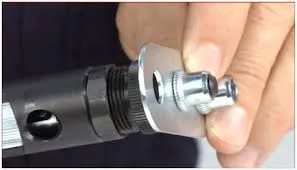
(1) Installation Tips
Proper installation of Nutserts requires choosing the right tools, ensuring precise hole sizes, and applying the correct riveting force to ensure stability and durability.
1. Choosing the Right Tool for Nutserts
Selecting the correct installation tool based on the size of the Nutserts can improve efficiency and reduce the risk of damage during installation.
Small-sized Nutserts (M3-M6)
Suitable for manual rivet nut guns. This tool is easy to operate and ideal for small-scale installations or maintenance, such as for furniture, electronic devices, and small components. Manual tools are suitable for thinner metals or plastics, but they are relatively inefficient for large-volume production.
Medium-sized Nutserts (M6-M12)
Recommended to use electric rivet nut guns, which provide more uniform pulling force to ensure high-quality riveting. They are suitable for medium-thickness metal plates, such as in automotive manufacturing, enclosures, and mechanical equipment. Compared to manual tools, electric tools reduce operator fatigue and increase work efficiency.
Large-sized Nutserts (M12 and above)
Requires pneumatic rivet nut guns or hydraulic rivet nut guns, especially for rail transport, shipbuilding, and heavy machinery applications. These tools can provide higher riveting force, ensuring that Nutserts are securely fastened to thick plates and preventing loosening or installation failure due to insufficient manual force.
The hole size for installing Nutserts is crucial to achieving a strong fastening effect. If the hole is not the right size, installation failure or reduced connection strength may occur.
Hole too large
If the hole diameter is larger than recommended, Nutserts may not fit tightly, causing them to loosen or even fall out. In this case, it is recommended to use larger-sized Nutserts or replace the material and re-drill to ensure the hole matches the Nutsert size.
Hole too small
If the hole diameter is smaller than recommended, Nutserts may be subjected to excessive pressure during installation, causing uneven deformation, which could affect thread strength or even result in breakage. In this case, it is recommended to use the correct drill bit to ream the hole and ensure the Nutserts can be installed smoothly.
Before installation, it is recommended to refer to the Nutsert manufacturer’s hole size standards and use precise measuring tools (such as calipers) to confirm whether the hole diameter meets the required size.
3. Apply Proper Riveting Force
Applying the correct riveting force during installation can prevent Nutserts from loosening or being damaged.
Excessive riveting force
If too much force is applied during riveting, it may cause the Nutsert’s threaded part to break, the flange to deform, or the material to tear, compromising the strength and durability of the connection. This is especially common when using plastics, thin metal sheets, and other brittle materials. Therefore, the torque or pulling force setting of the tool should be properly adjusted to avoid over-tightening.
Insufficient riveting force
If the riveting force is too low, Nutserts may not expand fully, causing them to not hold tightly in the material and weakening the thread’s load-bearing capacity. In this case, it is recommended to use a stronger rivet nut gun or adjust the riveting force to ensure Nutserts expand fully and are securely fastened to the material.
Before actual installation, it is advisable to perform a test installation on scrap material to adjust the proper riveting force for optimal results.
During Nutsert installation, several common issues may arise, such as loosening, spinning, or cracking. Below are the potential causes and corresponding solutions.
1. Nutserts is Loose After Installation
Possible Causes:
- The hole diameter is too large, preventing the Nutsert from being securely fastened in the material.
- The applied riveting force is insufficient, preventing Nutserts from fully expanding and securing.
- The material is too soft, causing slight deformation of the Nutsert under load.
Solutions:
- Check if the hole diameter matches the recommended size. If the hole is too large, consider switching to a larger Nutsert size or re-drilling the hole to fit.
- Adjust the riveting tool’s force settings to ensure the Nutsert fully expands and tightly fits the material.
- Use Nutserts made of more suitable material (e.g., switch from aluminum to steel) to enhance the fastening effect.
2. Nutserts Spins in the Hole
Possible Causes:
- The material is too soft, preventing the Nutsert from being securely embedded.
- The rotational torque is too high, causing the Nutsert to spin.
- Round body Nutserts may not be stable enough in high-torque applications.
Solutions:
- Choose hexagonal Nutserts (Hex Body Nutserts), which prevent rotation after installation in hexagonal holes.
- Add washers or use Nutserts with anti-slip teeth inside the material to enhance the fastening effect before installation.
- Reduce the rotational torque to ensure the bolt is not over-tightened during installation.
3. Nutserts Breaks or Cracks
Possible Causes:
- Excessive riveting force leads to deformation or breakage of the Nutsert.
- Nutserts made from insufficiently strong materials fail to withstand high loads.
- Using mismatched tools causes uneven force distribution.
Solutions:
- Use the correct installation tools to ensure even force distribution, preventing additional pressure on the Nutsert.
- Choose stronger Nutsert materials, such as steel or stainless steel, to handle greater pulling force and torque.
- Before installation, check the settings of the riveting tool and adjust the torque to avoid over-tightening.
Do You Have Any Questions?
Let Us Solve Your Problem
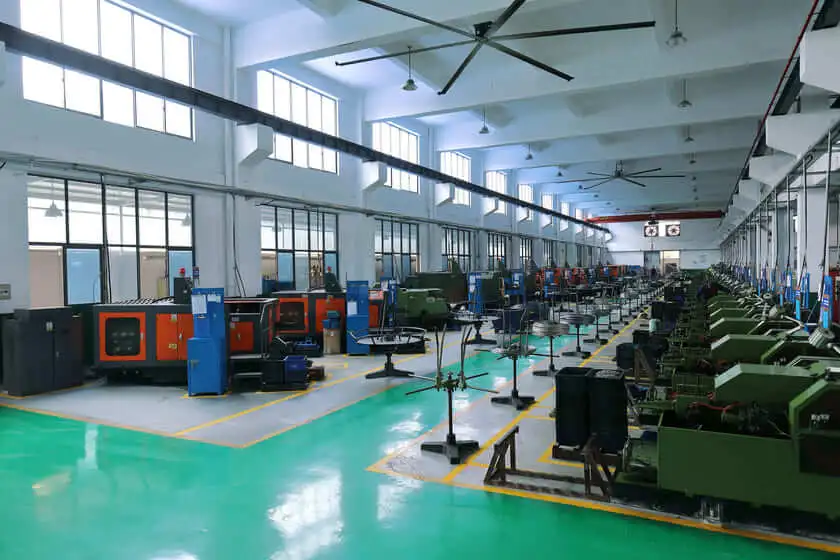
As a leading fastener manufacturer in China with more than 15 years in the industry, Rivetfix are committed to providing first-class quality fasteners and responsive services to the world.
Rivetfix offers a wide range of rivet nuts and rivet nut tools designed to meet the unique demands of your projects. Rivetfix ensures you have the right solution for every application. Choose Rivetfix for versatile, cost-effective, and durable fastening solutions tailored to your specific needs. In addition, we can also provide customized rivet nuts service according to your requirements.
Contact us for project advice and the latest rivet nuts and rivet nut tools quote!
Get High Quality Rivet Nuts Quote!
Send Your Rivet Nut Request
For more than 20 years, Rivetfix has helped customers solve many rivet nuts sourcing needs and technical challenges.
Have a question? Contact us and we’ll provide you with the perfect solution.


